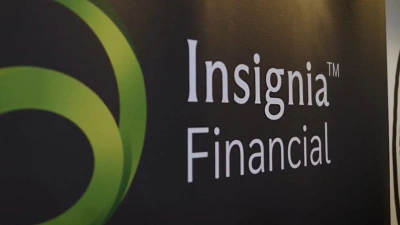Why today’s winners are tomorrow’s losers
You can almost hear investors around the world grinding their teeth. They have decided to invest, picked last-year’s top-performing fund only to see it plumb the depths of the performance tables for the next year or two.
There is a good reason if that sounds like a familiar story.
A research study commissioned by Vanguard earlier this year and conducted by research group Morningstar looked at 10 years of Australian share market funds and found that investors expecting a repeat of last year’s great result from a fund will generally be disappointed.
Take 2000, when the top five share funds posted an average return of 35 per cent. The following year the same five funds delivered an average return of 9.2 per cent.
According to Morningstar, the top fund in 2000 achieved a return of 47.8 per cent for that year but underperformed the index and produced a return of only 7.6 per cent the following year and then continued to underperform the index through to 2006, making it the bottom-performing fund.
Thirty one per cent of funds in the top five in 2000 failed to match the index the following year, some by a large margin.
The 10-year study showed that only 22 per cent of funds that were in the top five in any one year repeated the result the following year. This means 78 per cent did not repeatedly outperform.
More revealing still is that a portfolio of the top five performing funds — equally weighted — in each year underperformed the index over the year to June 30, 2006.
And then there is the issue of risk measured by a fund’s volatility.
Morningstar gave the example of the Phillips Special Situations Fund, which it says has volatility twice that of the typical share fund and appears regularly at either the top or bottom of the study.
The study also highlights another serious issue for investors: a fund’s long-term survival.
Investors, particularly those saving for retirement, have long-time horizons, but even good performance is no guarantee of survival.
Almost 30 per cent of the funds analysed in the Morningstar study do not exist today, while 18.8 per cent of the funds that appeared among the top performers in any year were among those terminated.
Morningstar’s study, which was first conducted in 2003, reminds us of some basic principles of investing:
> focus on the long-term objectives rather than chase past winners;
> understand which factors have driven a fund’s returns;
> understand the risks inherent in a particular investment; and
> build diversified portfolios.
To that you can add another important factor that investors and advisers can control: costs. Keep them as low as possible. Costs like expenses, management fees, adviser fees and transaction costs accumulate and compound over time.
Jack Bogle, founder and former chief executive of the Vanguard Group, said an issue that is often overlooked is the relationship between high turnover, high cost funds and risk.
He wrote: “Step by step, as costs increase, so does risk.”
Bogle used the volatility of monthly returns of US equity mutual funds relative to the major US share market index, the S&P 500, to measure the cost impact of high turnover funds. Bogle’s analysis found that funds with the highest expense and highest turnover costs incurred 34 per cent more risk than the lowest cost funds.
Very active managers with high turnover levels will generally have much higher levels of realised short-term capital gains in their returns.
For example, for the financial year to June 30, 2006, the average return for the 15 largest Australian share funds was 22.3 per cent. This return comprised 14.3 per cent in income (made up of dividends and realised capital gains) and 7.4 per cent in capital growth. A level of income this high could take a huge chunk out of your final investment return depending on your marginal tax rate.
Index managers that use a buy-and-hold investment approach reduce the impact of short-term capital gains tax so you can keep more of the returns you earn. Don’t forget the adage ‘buyer beware’ has just as much relevance for managed funds as it does for consumer products.
Morningstar’s study boils down to one powerful point that experienced advisers know all too well: past performance is a poor guide to picking next year’s winners.
So, how do you know what is driving the share market?
Share prices are affected by a number of forces, many of which are constantly shifting.
For instance, prices on a single day can be affected by emotional reactions to news of a change in interest rates, inflation, company profits, dividends, economic growth figures and the rise or fall of our dollar.
Just as powerful are the effects of changes in domestic and international politics and the mood swings of investors themselves.
As history tells us, fear and greed can play a significant role in the movement of markets. Time and time again unsustainable market prices propped up by speculation have come undone when investment fundamentals and commonsense have prevailed.
Jack Bogle draws on wisdom from British economist John Maynard Keynes in his Little Book of Common Sense Investing when explaining the long-term investment performance of the share market.
He wrote: “The state of long-term expectation for stocks is a combination of enterprise (‘forecasting the prospective yield of assets over their whole life’) and speculation (‘forecasting the psychology of the market’).”
Enterprise, as Keynes described it, is derived from a company’s dividend yield and earnings growth and is one of the most fundamental drivers of long-term market growth.
On the other hand, speculation refers to the impact of changing price/earnings multiples on stock prices.
Bogle offered more words of wisdom when he wrote: “My advice to investors is to ignore the short-term noise of the emotions reflected in our financial markets and focus on the productive, long-term economics of our corporate businesses.”
Robin Bowerman is head of retail at Vanguard InvestmentsAustralia .
Recommended for you
Net cash flow on AMP’s platforms saw a substantial jump in the last quarter to $740 million, while its new digital advice offering boosted flows to superannuation and investment.
Insignia Financial has provided an update on the status of its private equity bidders as an initial six-week due diligence period comes to an end.
A judge has detailed how individuals lent as much as $1.1 million each to former financial adviser Anthony Del Vecchio, only learning when they contacted his employer that nothing had ever been invested.
Having rejected the possibility of an IPO, Mason Stevens’ CEO details why the wealth platform went down the PE route and how it intends to accelerate its growth ambitions in financial advice.














